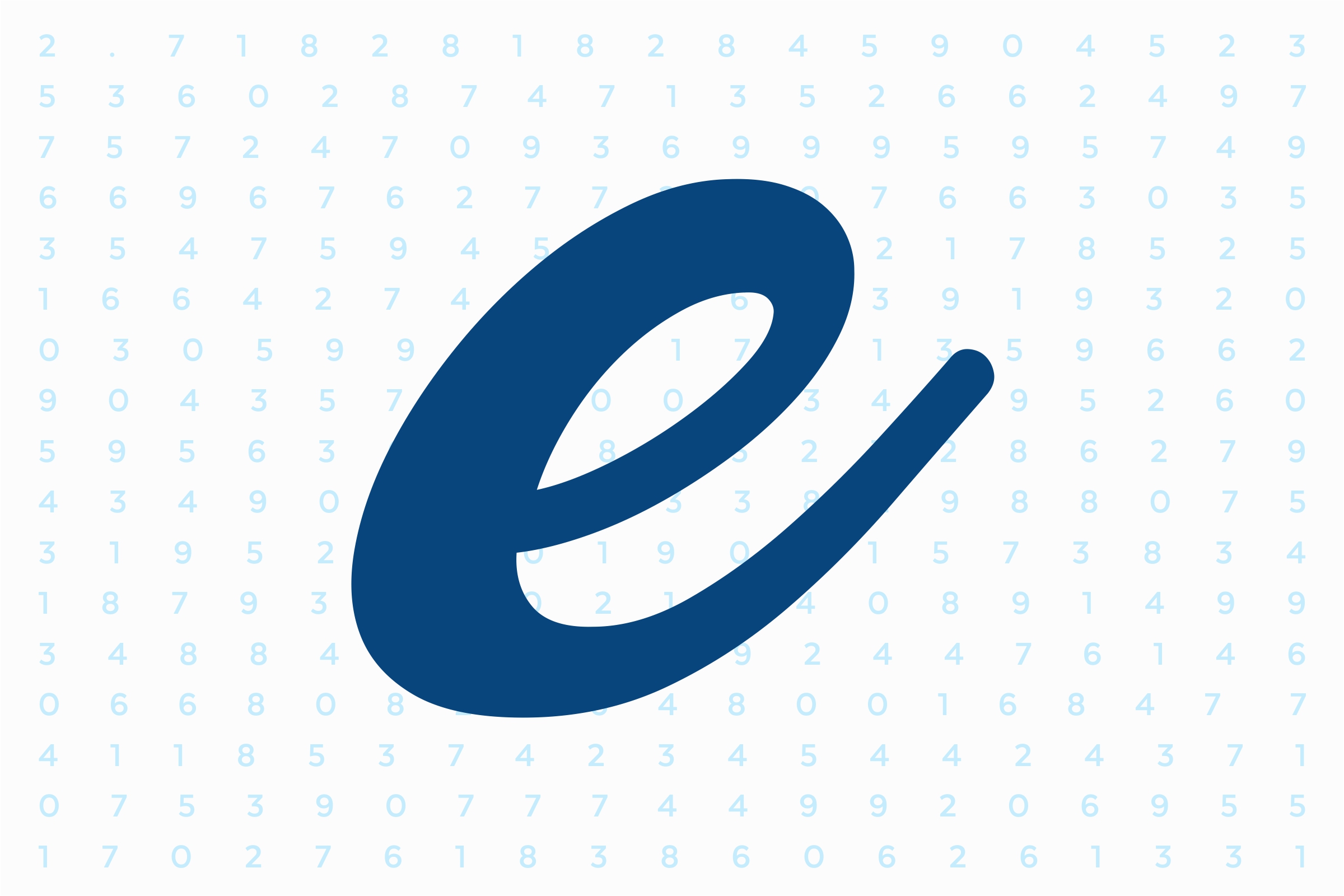Enrich your knowledge with our informative blogs
What does e mean in math?

Lowercase ‘e’ is also known as Euler’s number named after the famous mathematician Leonhard Euler. This number is an irrational number because it has a non – recurring decimal that stretches to infinity. Euler’s number ‘e’ is a numerical constant just like pi (\pi ) and is one of the key pillars in mathematical calculations.
The value of e is 2.71828182845…………
As e is an irrational number, it is usually used under logarithm concepts. e plays a key role in problem solving in both mathematics as well as physics. The symbol e is also known as Napier’s Constant.
The value of e raised to the power 1 will give the same value as e but value of e raised to the power 0 is equal to 1 and e raised to the power gives the value as infinity. The reason is that e when results in a very big number or infinity. Similarly, when e is raised to negative power of infinity, the number turns out to be very small, which is almost equal to zero.
\begin{array}{l}{{e}^{1}}\,\,=\,e\\{{e}^{0}}\,\,=\,1\\{{e}^{\infty }}\,=\,{{(2.71)}^{\infty }}\\{{e}^{{-\infty }}}=\,{{(2.71)}^{{-\infty }}}\,=0\end{array}Important things to note about e
- e is an irrational number i.e. digits after decimal are non-recurring. So, it cannot be expressed in the form of a fraction.
- e has its application in many areas, concepts and subjects such as advanced mathematics and physics.
- e is the base of all natural logarithms (This was discovered by John Napier).
- e is transcendental or non-algebraic. This means that e cannot be obtained by performing calculations of any non-zero polynomial having finite degree as well as rational coefficients.
- It’s the base to all natural logarithms i.e. Log (e) or Loge e = 1
- Area under the curve y = 1/x from x=1 to x=e is 1 sq. units.
- The slope of the graph of y={{e}^{x}} lies between y={{2}^{x}} and y={{3}^{x}} .
Euler’s number (e):
The Euler’s number ‘e’ is the limit of {{(1+1/n)}^{n}} as n approaches infinity. It can also be expressed as the summation of the following series.
e=\,\sum\nolimits_{{n=0}}^{\infty }{{}}1/n!e = 1/0! + 1/1! + 1/2! + 1/3! + ………………….and so on (here, ! means factorial)
e = 2.71828182845904523536028747135266249775724709369995…. which is an irrational number upto 50 decimal places.
Also, {{e}^{x}}=1+\,\,\frac{x}{{1!}}\,+\,\,\frac{{{{x}^{2}}}}{{2!}}\,+\frac{{{{x}^{3}}}}{{3!}}\,+\,...,\,-\infty <x<\infty
e is also equal to \underset{{x\to \infty }}{\mathop{{\lim }}}\,\,\left( {1+\frac{1}{n}} \right)n where n tends to infinity.
Let’s check the value of e for some numbers!
| n | |
| 1 | 2.00000 |
| 2 | 2.25000 |
| 5 | 2.48832 |
| 10 | 2.59374 |
| 100 | 2.70481 |
| 1,000 | 2.71692 |
| 10,000 | 2.71815 |
| 100,000 | 2.71827 |
For complex numbers the formula becomes:
eiπ + 1 = 0
This number is used in various mathematical concepts and calculations. Similarly, like other mathematical constants such as beta, gamma, pi etc the value of e plays an important role.
Applications of e
Let’s check some areas where e plays a vital role not only in academics but in real life world as well.
- Compound Interest
- Probability, probability theorem, binomial distribution, binomial theorem and Pascal’s triangle.
- Standard Normal Distribution and Derangements
- Optical planning problems
- Asymptotics
- Differential and integral calculus
- Exponential and logarithmic functions
Read More – Mathematics Questions
View More – Useful links for Your Child’s Development

Unleash the Power of visualization to break tough concepts
Wanna be the next Maths wizard? Discover the new way of learning concepts with real-life Visualization techniques and instant doubt resolutions.
Categories
Recent Posts
- List of the qualities you should look for in your tutors?
- What is the most useful formulas in math?
- Describe the process of eating to defecation of food?
- Difference between the natural and artificial active response by the immunology system.
- Explain the different circle theorems
- How are nerve cells adapted to their function?










